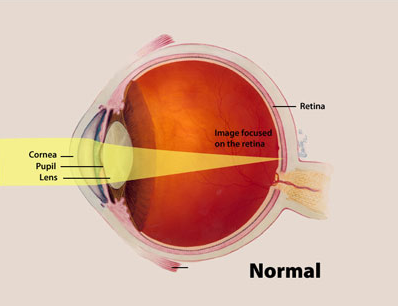Could your eyes reveal ADHD or autism? Austin doctors intrigued by new research
Diagnosing autism spectrum disorder and attention-deficit/hyperactivity disorder can be difficult. The tests doctors use, the questionnaires parents and teachers fill out, and the observation doctors do are not definitive, says Dr. Dilip Karnik, a pediatric neurologist with Child Neurology Consultants of Austin.
He has 44 years of experience in neurology, including the past 33 working in cognitive neurology, diagnosing and treating autism and ADHD, and often finds that in kids with high functioning autism or ADHD, it can be especially difficult to diagnose or distinguish between the two disorders.
A new study out of Australia used an electroretinogram to look at the electrical activity of the retinas in the eyes to detect differences in people with autism or ADHD. The theory is that kids with ADHD have higher levels of energy in the retina in response to light. Kids with autism have lower levels of energy in the retina.
"This kind of test would help me differentiate them," Karnik said.
Understanding autism:Is it autism? Mental illness? Both? How to navigate double diagnosis

Why would the eyes reveal autism or ADHD?
The tissue in the retina is neural tissue, said Dr. Edward Wood, an ophthalmologist and retinal specialist with Austin Retina Associates. It's similar to the cell types in the central nervous system, he said.
"The eyes are a surrogate for what's going on in the body," Wood said.
Looking at the retina cells, you also could tell how the cells in the brain might be functioning in a different way from what is neurotypical ― at least that is the theory behind the study, Wood said.
The electroretinogram device is something retina specialists use in their offices already to diagnose different diseases or differences in the retina. Electrodes are attached around the eye, sometimes using a special contact lens, and then a technician runs the machine to record the electrical waves. It's much like an electrocardiogram, which measures the heart's electrical waves. Based on the retina wave lengths recorded, autism or ADHD or another kind of neurological disorder could be diagnosed.
Wood says an electroretinogram is something that could be done on kids, even toddlers, with an experienced technician.
Are we ready to start doing eye tests?
The Australian study analyzed 226 people — 55 with autism, 15 with ADHD and 156 as the control group. More data are needed, Karnik said. That would need to be gathered from larger studies with more people at more study sites, he said.
Future studies would need to rule out other neurological disorders that might also have different electroretinogram wave lengths, he said.
To start using this test, Karnik would need it to go through the U.S. Food and Drug Administration approval process for this purpose, which would then allow the test to be covered by insurance.
"It's interesting research," he said. "It's a good start. If a lot of other people would do it and come to a better conclusion, then it will be a good diagnostic tool."
It could take three to five years for all the research to be done and the FDA process to be completed, he said.
In the meantime, Karnik has tests that can reach 85% to 90% clarity of diagnosis, he said. Those include computer tests that look at what visual and auditory stimuli a person's brain records, a test that monitors body movements and looks for excessive movements in people with ADHD, and a test that records and analyzes brain waves. Those as well as what doctors, parents and teachers observe help create the diagnosis.
Understanding ADHD:COVID-19 disruptions have been hard on kids with ADHD, Austin expert says
These diagnoses are important because they make people eligible for different condition-specific therapies, resources and special education services.
While the electroretinogram isn't ready to be used to diagnose these conditions, doctors say it is exciting to think about the possibilities and how more research could build on what's already been learned.
"There's so many other threads to untangle, to understand," Wood said.
This article originally appeared on Austin American-Statesman: Austin doctors intrigued by eye test that may help diagnose autism, ADHD
